Wanna have a delicious Japanese-themed party with endless possibilities?
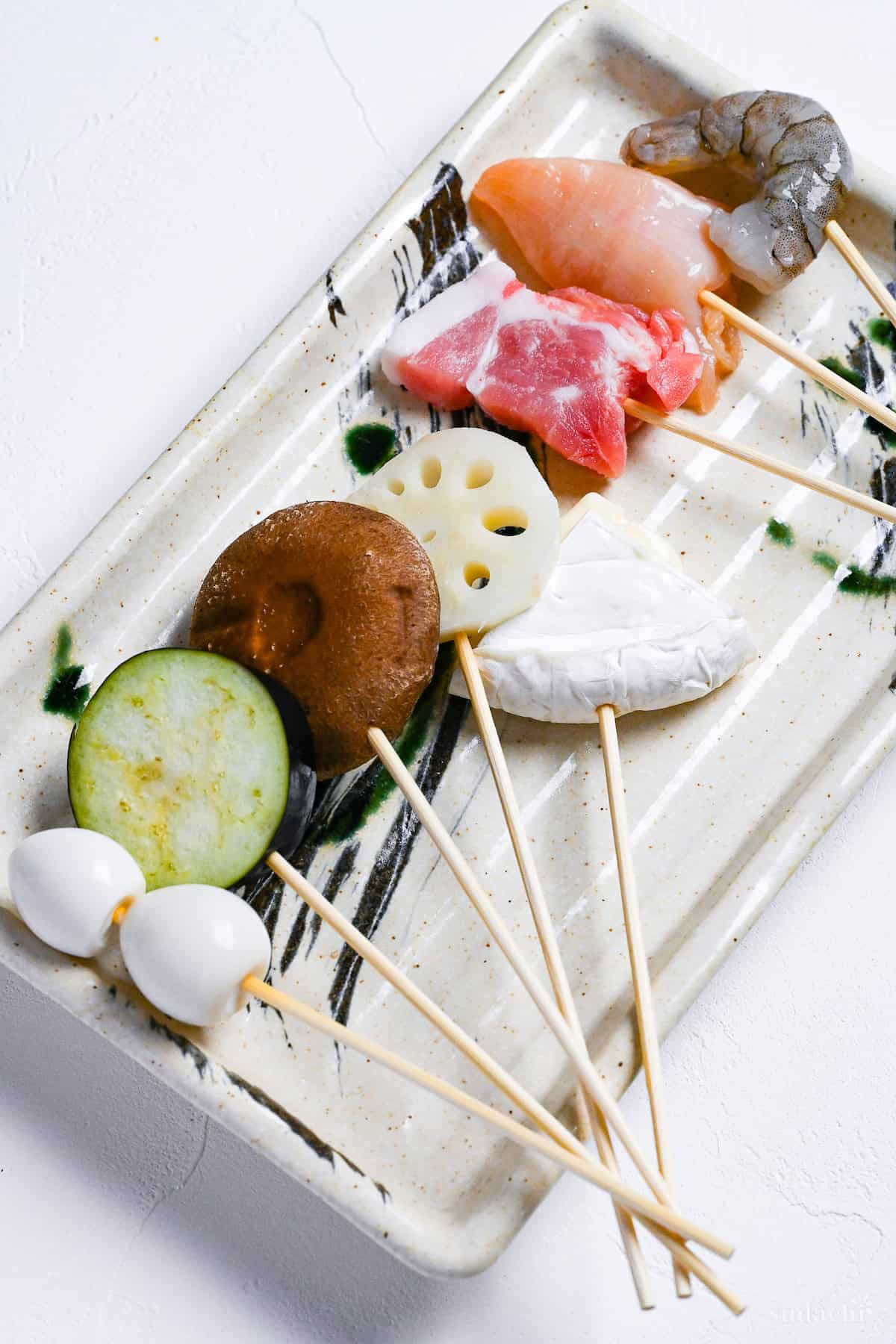
These Osaka-style Kushiage might just be the answer for you!
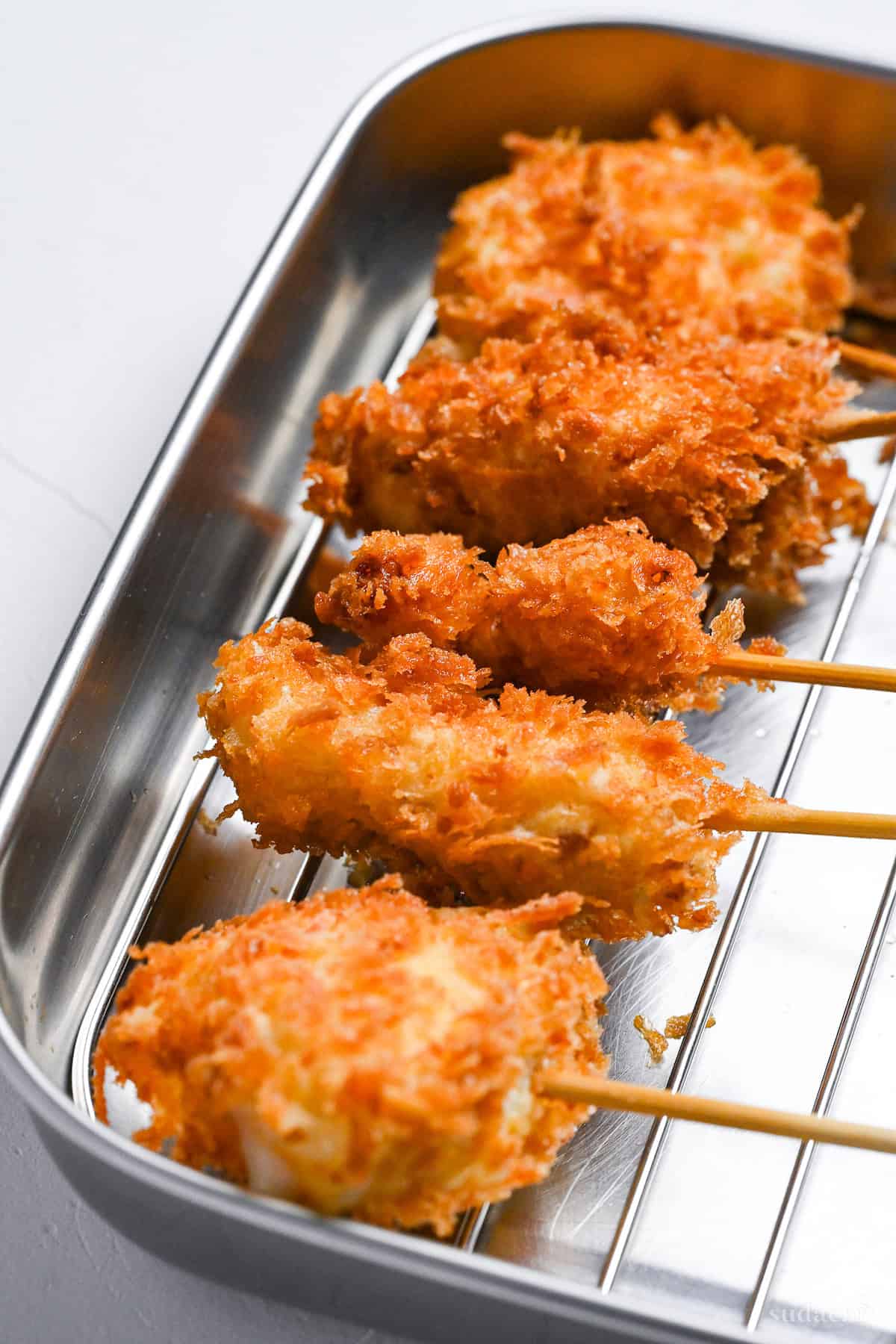
You don’t need any fancy Japanese ingredients to make these at home. Wanna know the examples? Keep reading this article!
What is Kushiage?
Kushiage (串揚げ) is a popular Japanese dish that features a variety of ingredients that have been skewered,
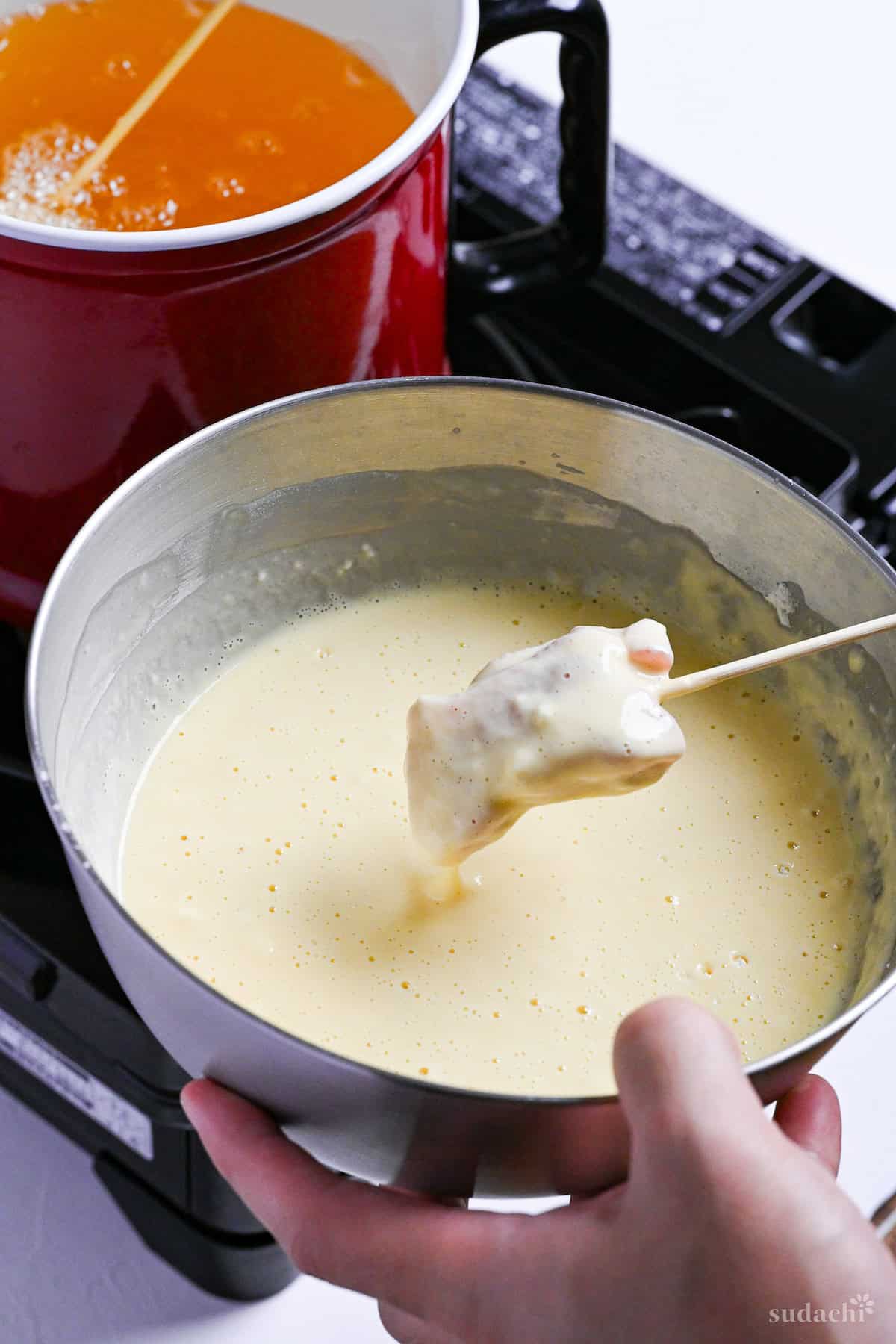
Battered,
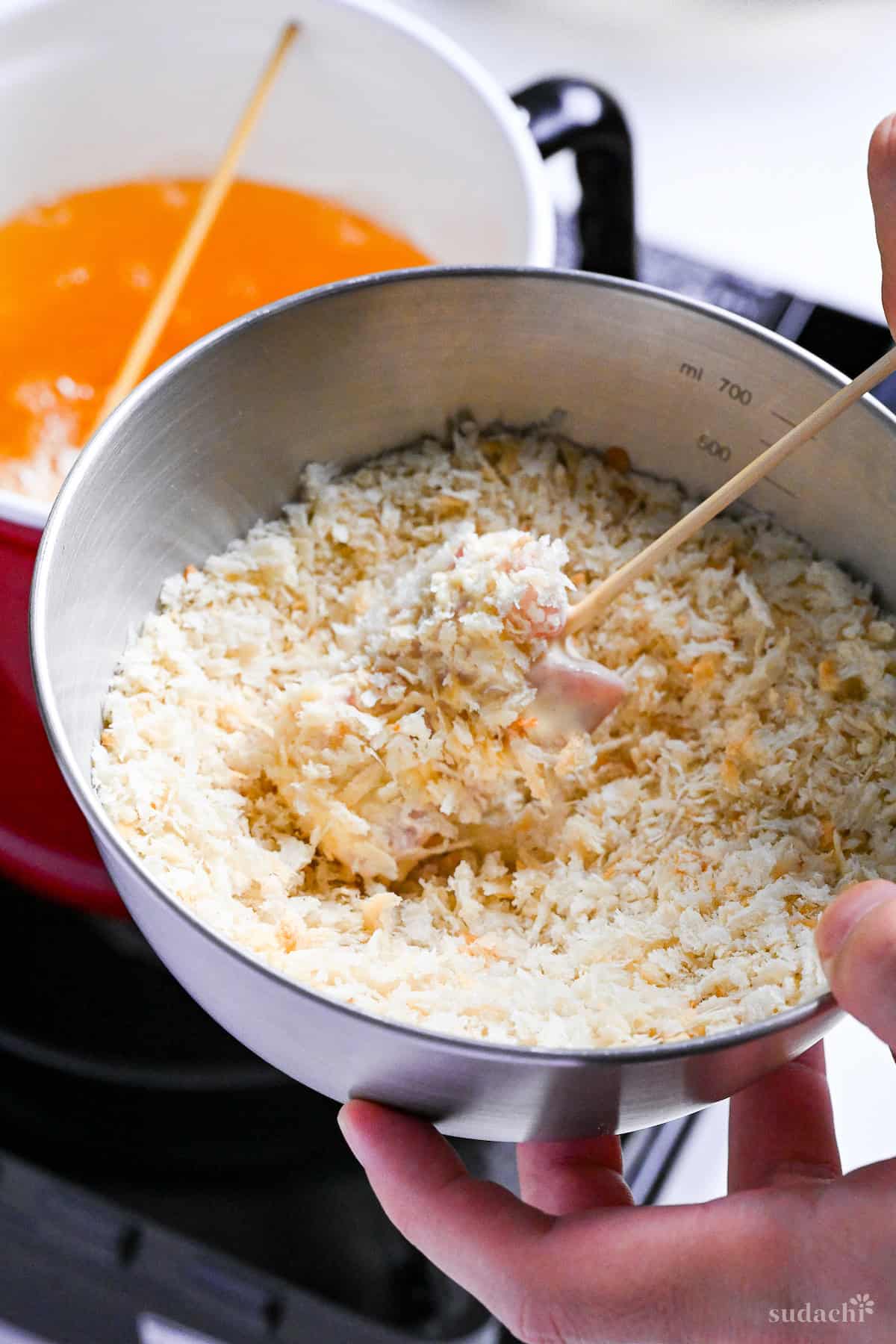
Breaded,
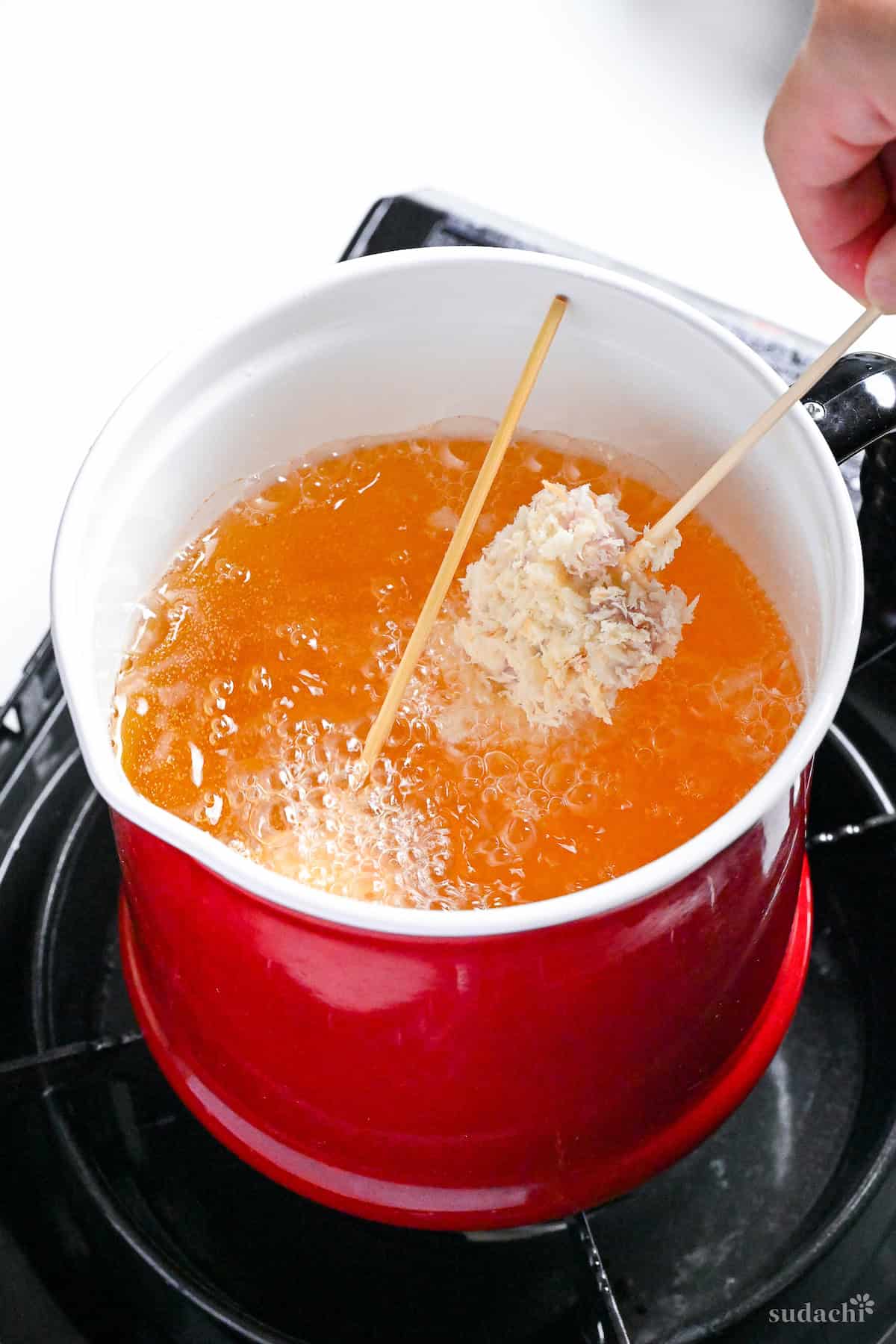
Deep-fried,
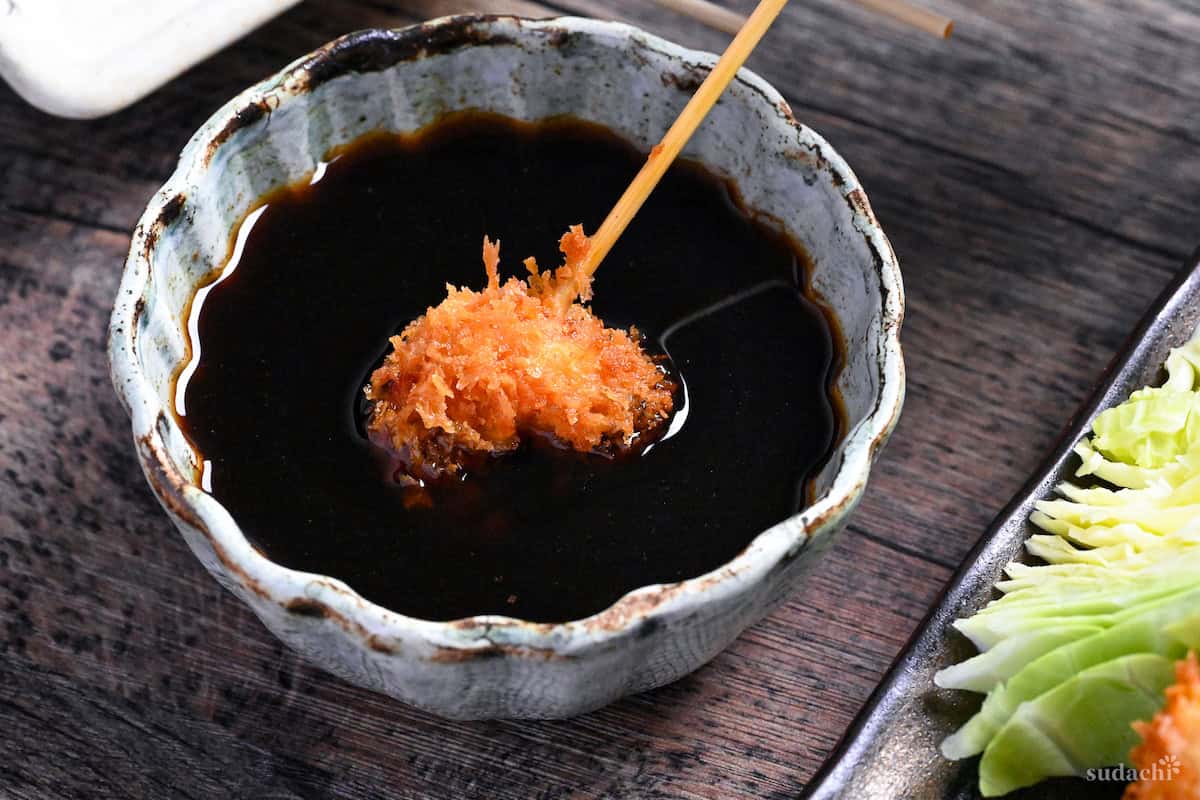
Then dipped in a special sauce.
Kushiage is often confused with Kushikatsu (串カツ), but Kushiage offers a more diverse range of flavors and textures.
While Kushikatsu primarily uses pork, Kushiage embraces a wider array of ingredients, making it a truly unique and delicious experience. Vegetables, meat, and seafood are cut into bite-sized pieces, carefully skewered on bamboo sticks, coated with a crispy layer of batter and breadcrumbs, and then deep-fried to golden perfection.
That said, many people in Japan call it “Kushikatsu” anyway, so you don’t need to worry too much about it.
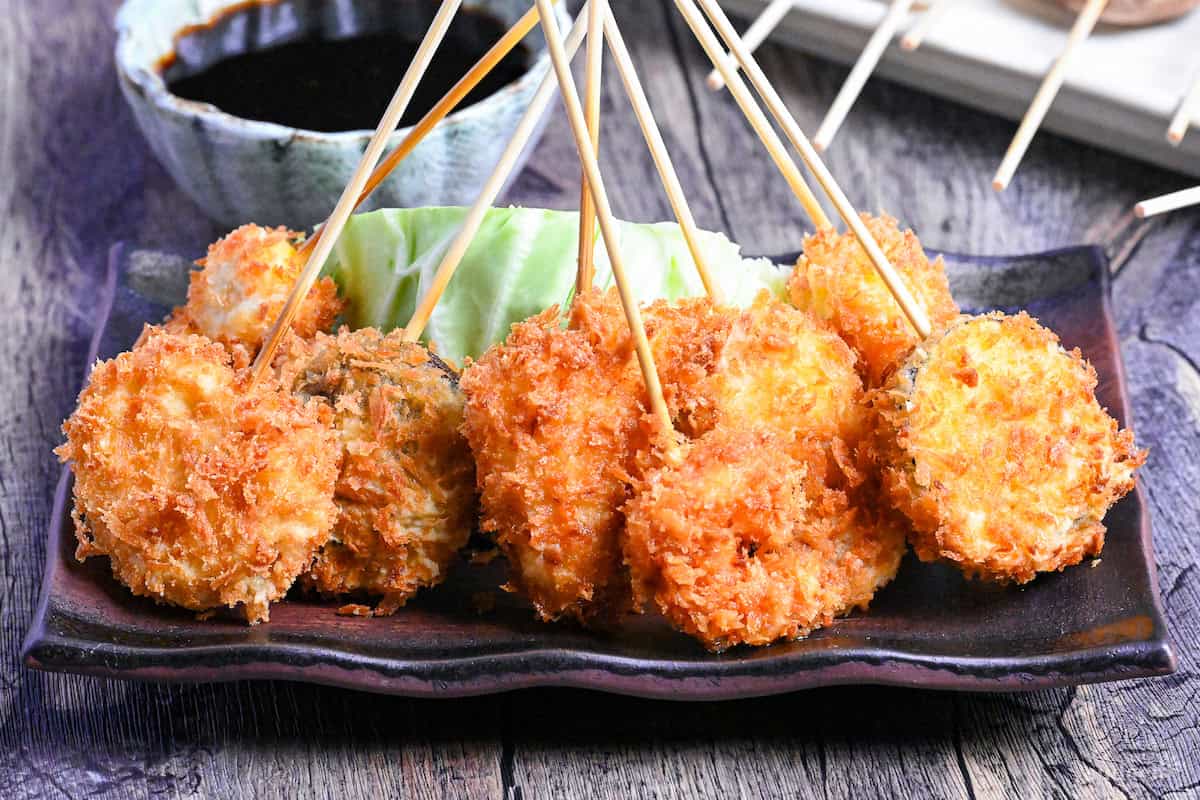
Japan boasts several regional styles of Kushiage:
- Kanto (East) style: Focuses mainly on pork and onions
- Chubu style (Central): Characterized by its distinctive miso sauce
- Kansai (West) style: Features a variety of ingredients and is served with a special dipping sauce
Among these, Osaka’s Kushiage is perhaps the most renowned. I’m from the Nagoya area, but I must admit that I prefer the Osaka style over our local miso-based version.
In this article, I’ll show you how to make the most delicious Osaka-style Kushiage at home! Get ready to wow your friends and family with this crispy, flavorful treat!

How I Developed This Recipe
Let’s face it, making Kushiage at home can be a bit tricky and messy. But if you’re in the mood for a fun, interactive meal with friends and family, it can be your go-to choice.
The best part? Everyone can fry whatever they feel like at their own pace. All you need to do is set up a tabletop fryer in the center, dip skewers in the batter, and coat them in the crispy breadcrumbs.
But you know what? The real star of my recipe is the Osaka-style dipping sauce. It’s absolutely authentic and delicious. If you’re not in the mood for a party, you can make the sauce just to eat with other breaded foods! I even want to recommend that.
So gather your friends, fire up that fryer, and get ready for a kushiage party.
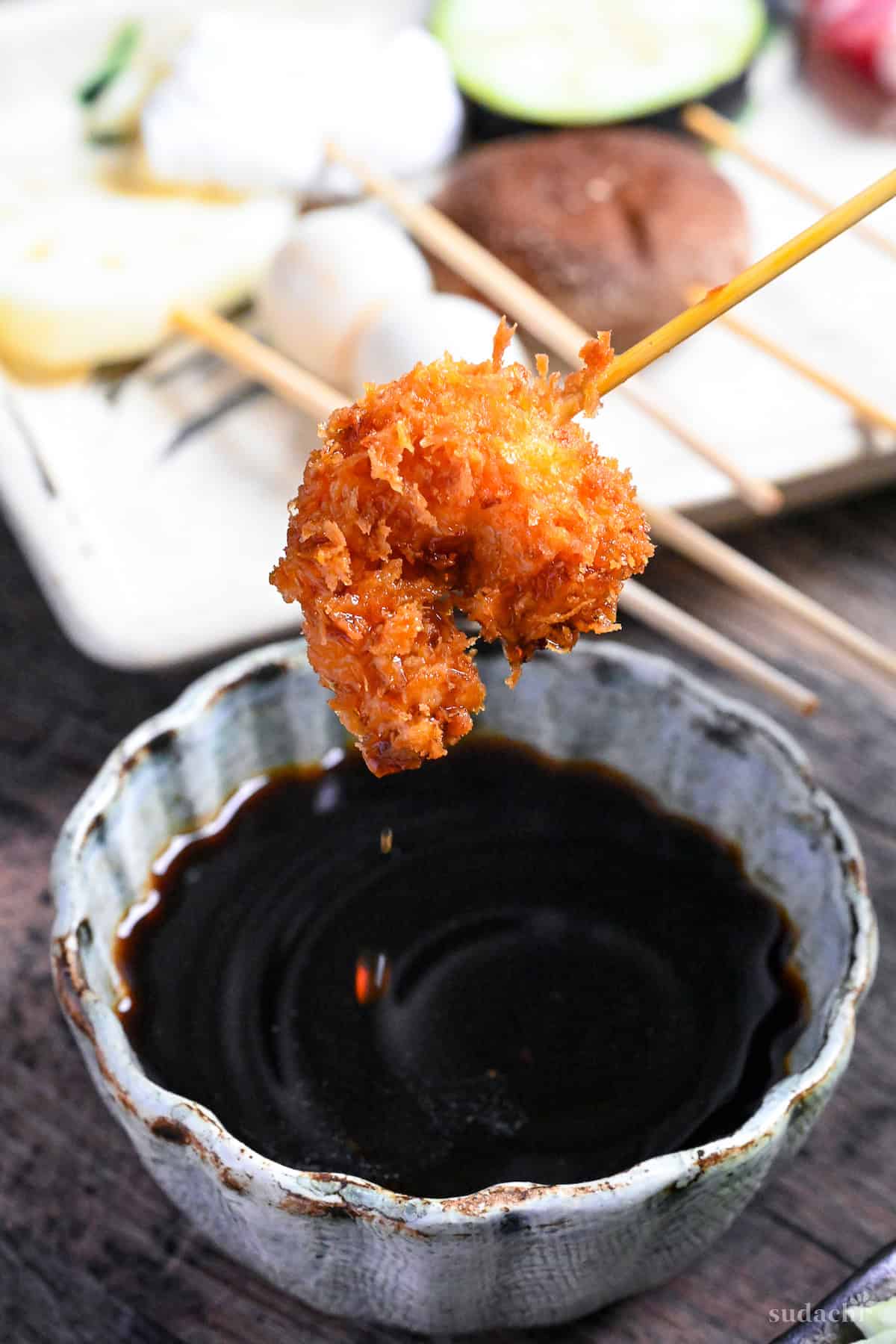
Ingredient Ideas: The Possibility is Endless
If you’ve ever been to a Kushiage restaurant in Osaka, you’ll know just how incredible the variety of ingredients used can be. It’s truly endless! Much like sushi and tempura, Kushiage celebrates a diverse array of flavors and textures, making it a truly unique and exciting experience.
The great news is that you don’t need to worry about hard-to-find Japanese ingredients to make delicious Kushiage! Chances are, you can find many suitable options readily available at your local supermarket! Here’s a list of the most common Kushiage ingredients, including those used in this recipe!
Here are the ingredients I actually used for this recipe and other common ingredients for Kushiage.
Meat
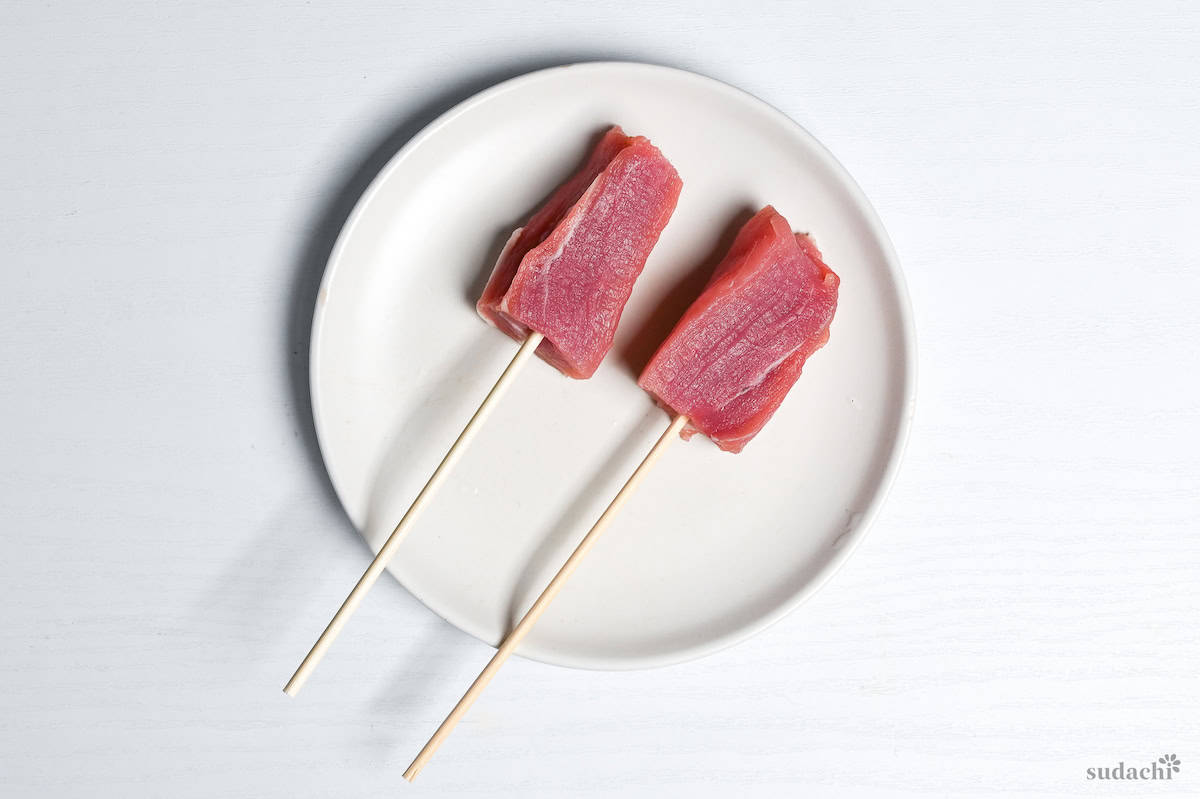
Pork is still the most popular choice for kushiage, and for good reason! Any part of the pork can be delicious when cut into bite-sized pieces.
Chicken breast is an excellent alternative, offering a leaner option that’s just as tasty when skewered and fried.
Seafood
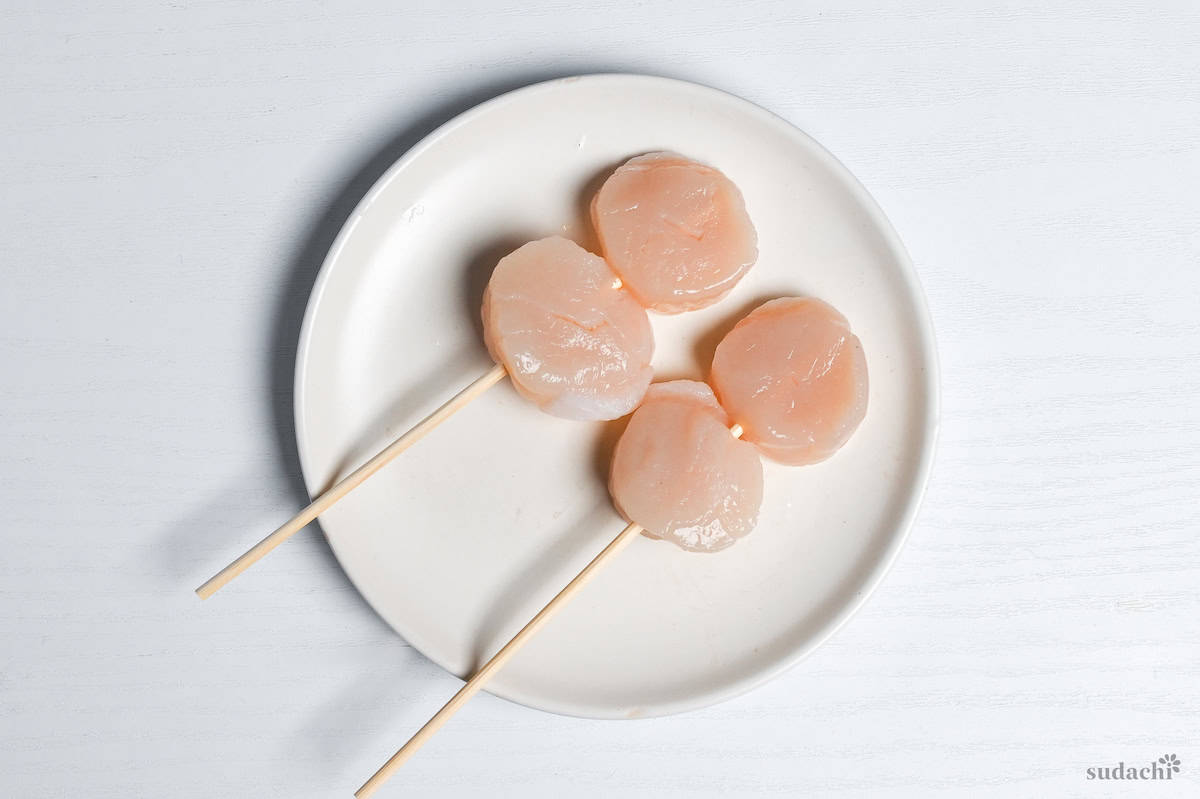
Shrimp and scallops are top recommendations for seafood.
In Osaka, you’ll also find octopus, squid, and white fish commonly used. These seafood options provide a unique variety of textures and flavors.
Boiled Quail Eggs
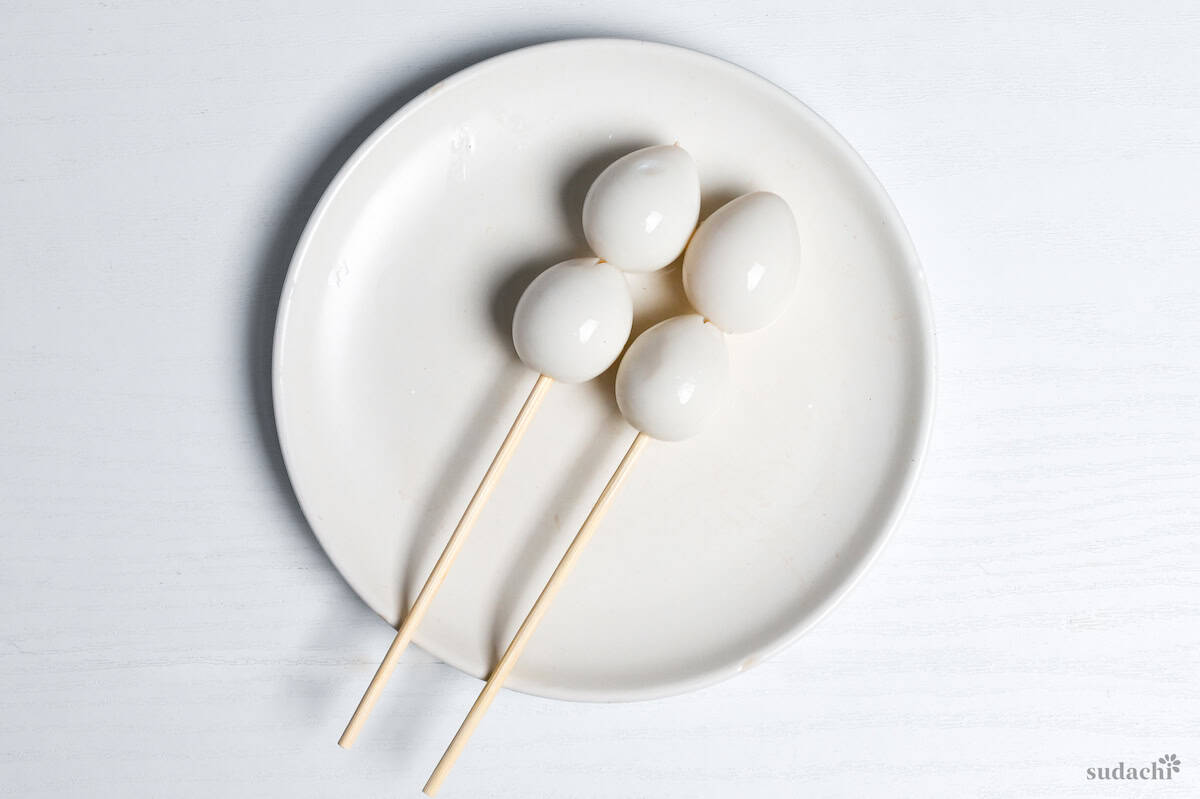
Quail eggs are not only aesthetically pleasing but also one of the most popular breaded ingredients in Japanese cuisine.
If available, they’re easy to skewer and make for an impressive kushiage option.
Lotus Roots
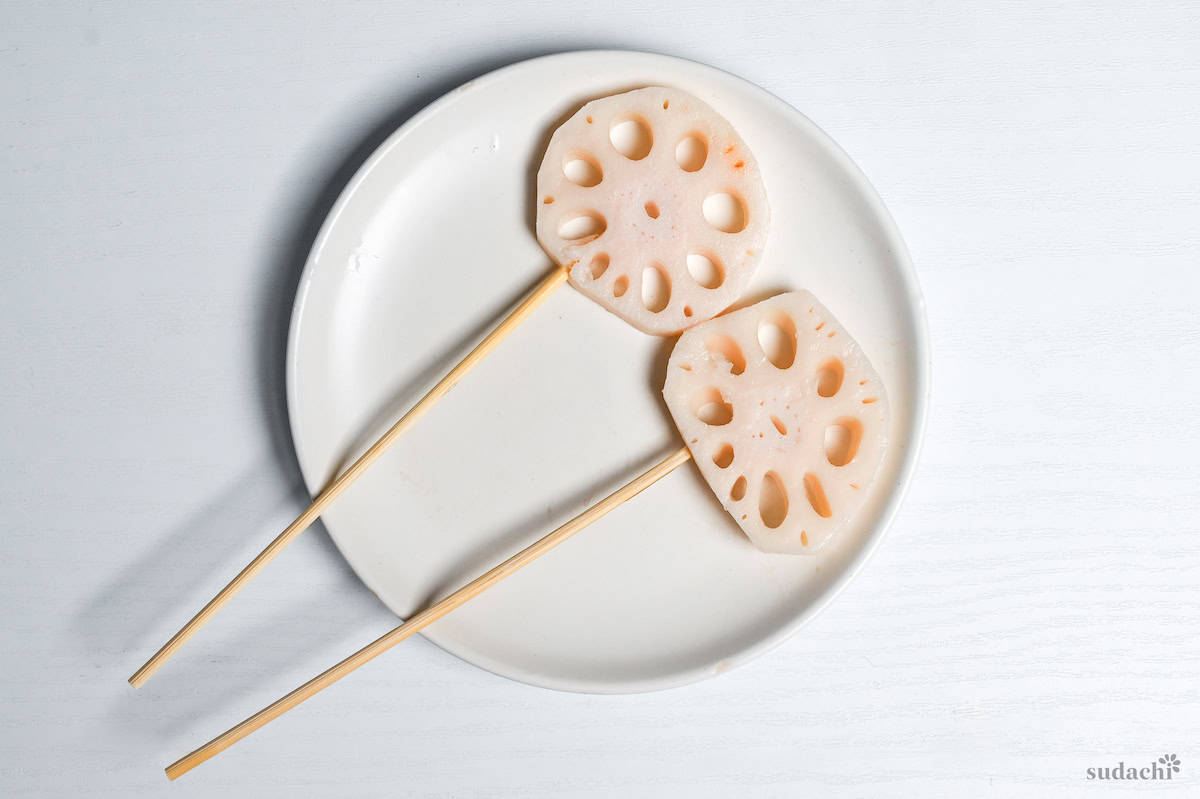
If you’re looking for a truly unique texture experience, look no further than lotus root! Sliced into thick rounds, this incredible ingredient is a standout in Kushiage.
Its texture and flavor are unlike anything you’ve ever tasted. This is actually my favorite ingredient by far! If you can find lotus root, you’ve got to try it!
Asparagus
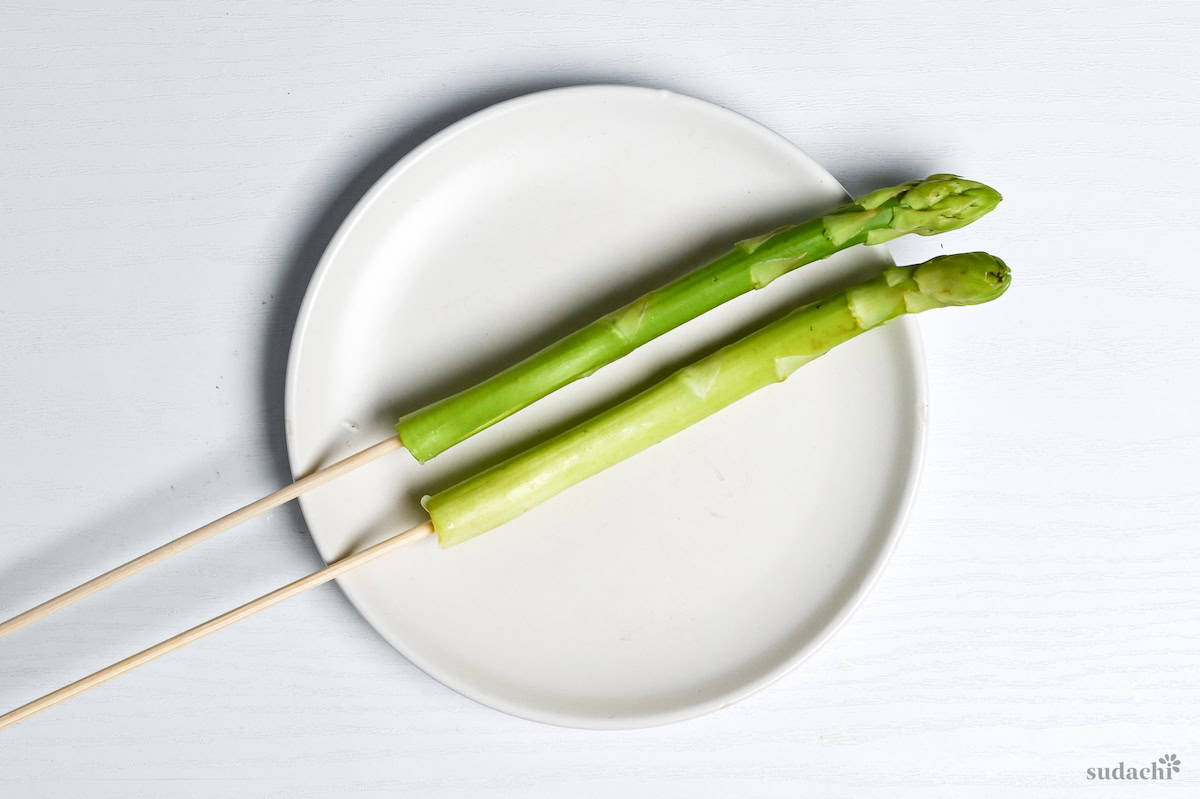
While it requires more oil due to its height, asparagus is widely available and pairs excellently with Kushiage sauces.
The only slight hiccup is the oil requirement, but the taste is so incredible that it’s well worth it!
Camembert Cheese
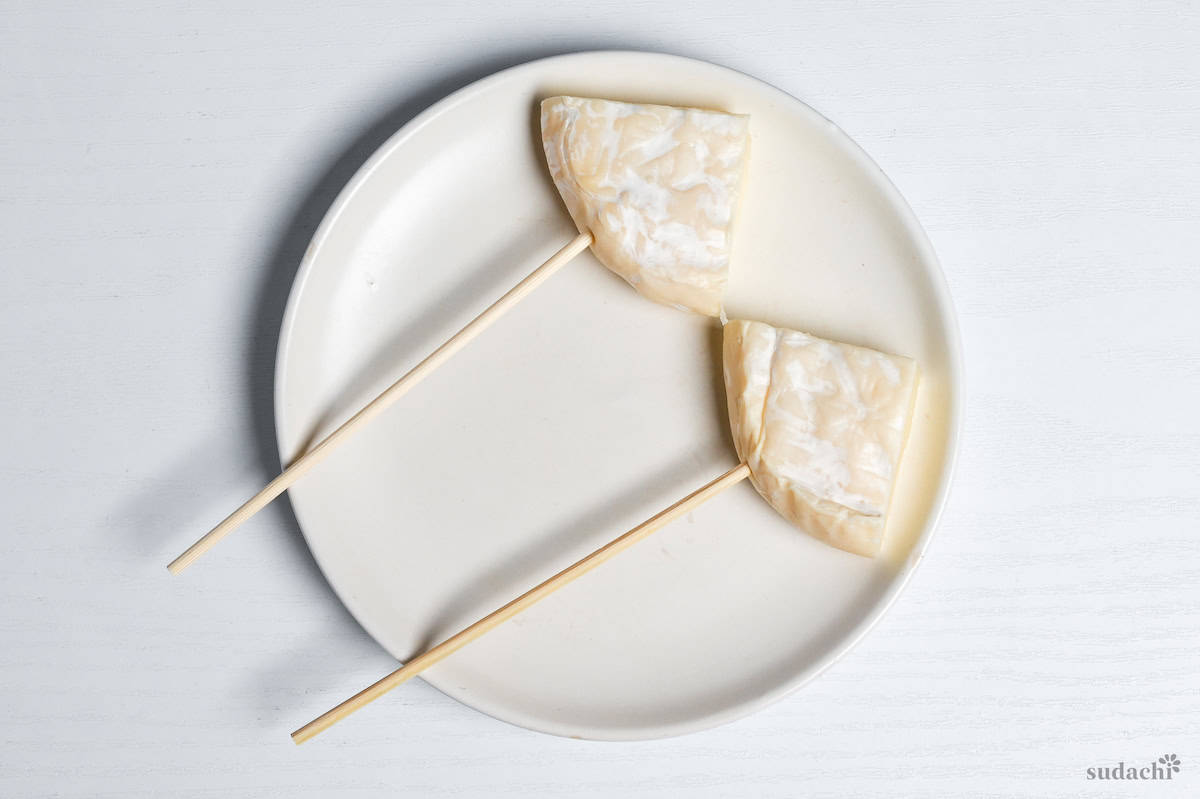
Camembert cheese is absolutely perfect with Kushiage sauce! Just be careful not to over-fry, as the cheese can melt and dirty the oil.
While other cheeses can be used, Camembert offers a particularly delicious combination.
Eggplant
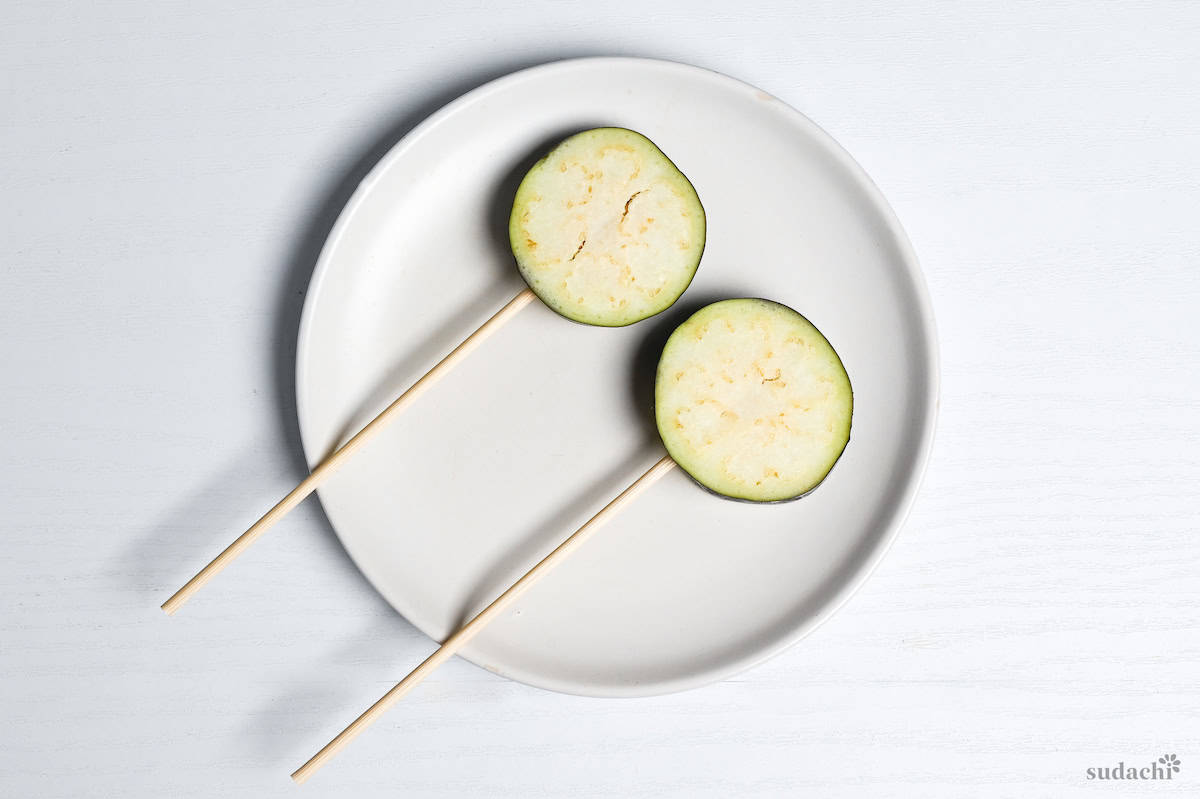
Eggplant is an amazingly convenient and tasty vegetable option for Kushiage!
Its light texture and ability to absorb flavors make it a must-try ingredient in your assortment.
Other Ingredient Ideas
The versatility of Kushiage extends far beyond the basics. Here’s a list of other popular ingredients often used:
Vegetables:
- Mushrooms
- Onions
- Garlic cloves
- Yam
- Potatoes
- Bamboo shoots
- Sweet potato
- Young corn
Meat and Poultry:
- Beef
- Chicken skin
- Sausage
- Bacon
Dairy and Eggs:
- Soft-boiled eggs
- Mozzarella cheese
Others:
- Red pickled ginger (benishoga)
- Rice cake (mochi)
The beauty of Kushiage is that it’s so flexible! You can get creative and make your own local assortment using whatever vegetables and ingredients you can get your hands on in your area! The best part is that there are no strict rules when it comes to ingredient selection!
Have fun experimenting with different combinations! Why not try pairing complementary flavors or contrasting textures to create your own unique Kushiage experience?
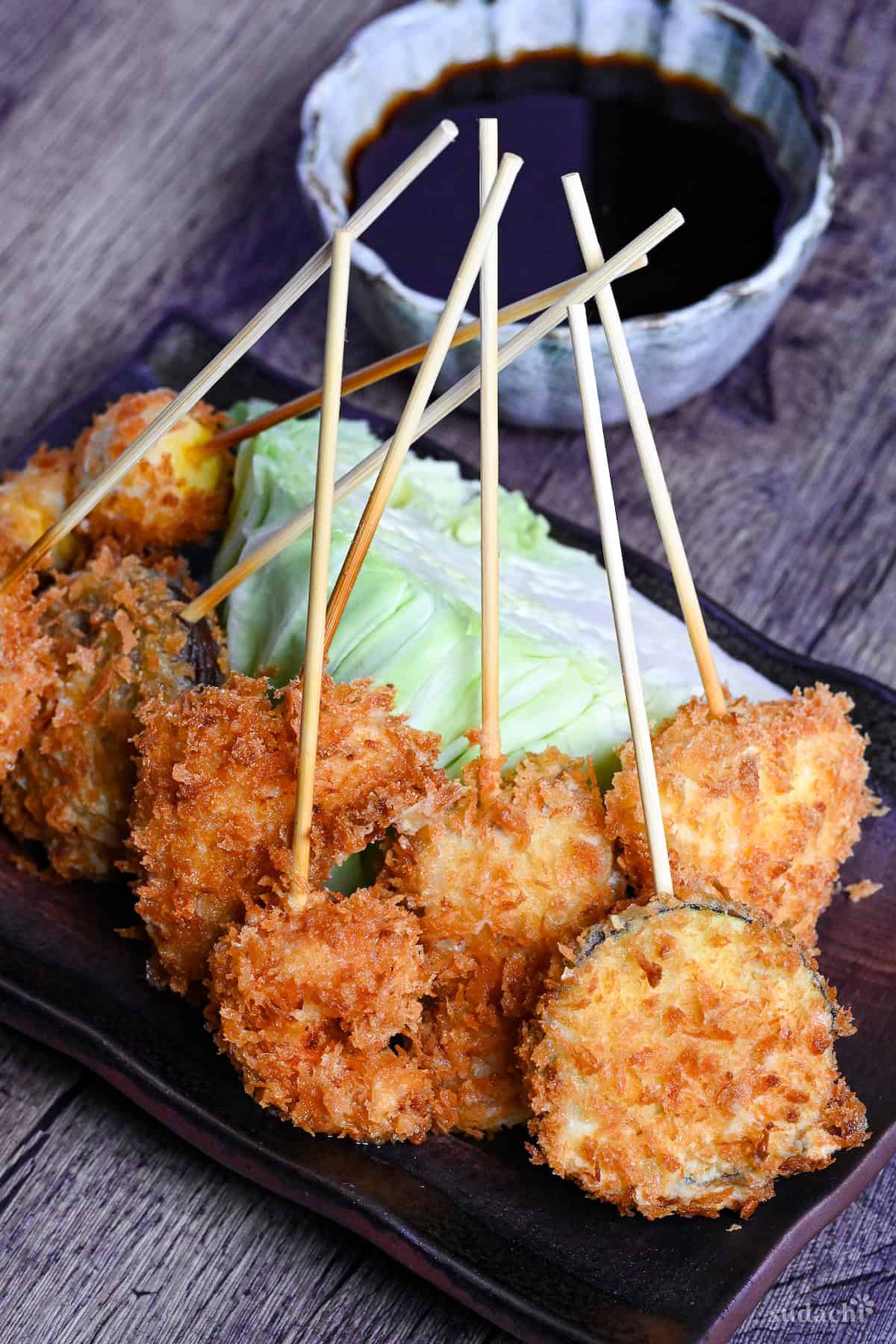
Visual Walkthrough & Tips
Here are my step-by-step instructions for how to make Osaka-Style Kushiage at home. For ingredient quantities and simplified instructions, scroll down for the Printable Recipe Card below.
This section aims to provide a comprehensive overview of the cooking steps and techniques with visuals. It also includes more in-depth tips and tricks and explains why I do what I do.
Combine all sauce ingredients in a saucepan. Heat over medium heat, stirring occasionally, until boiling. Reduce heat to low and simmer for 1 minute.
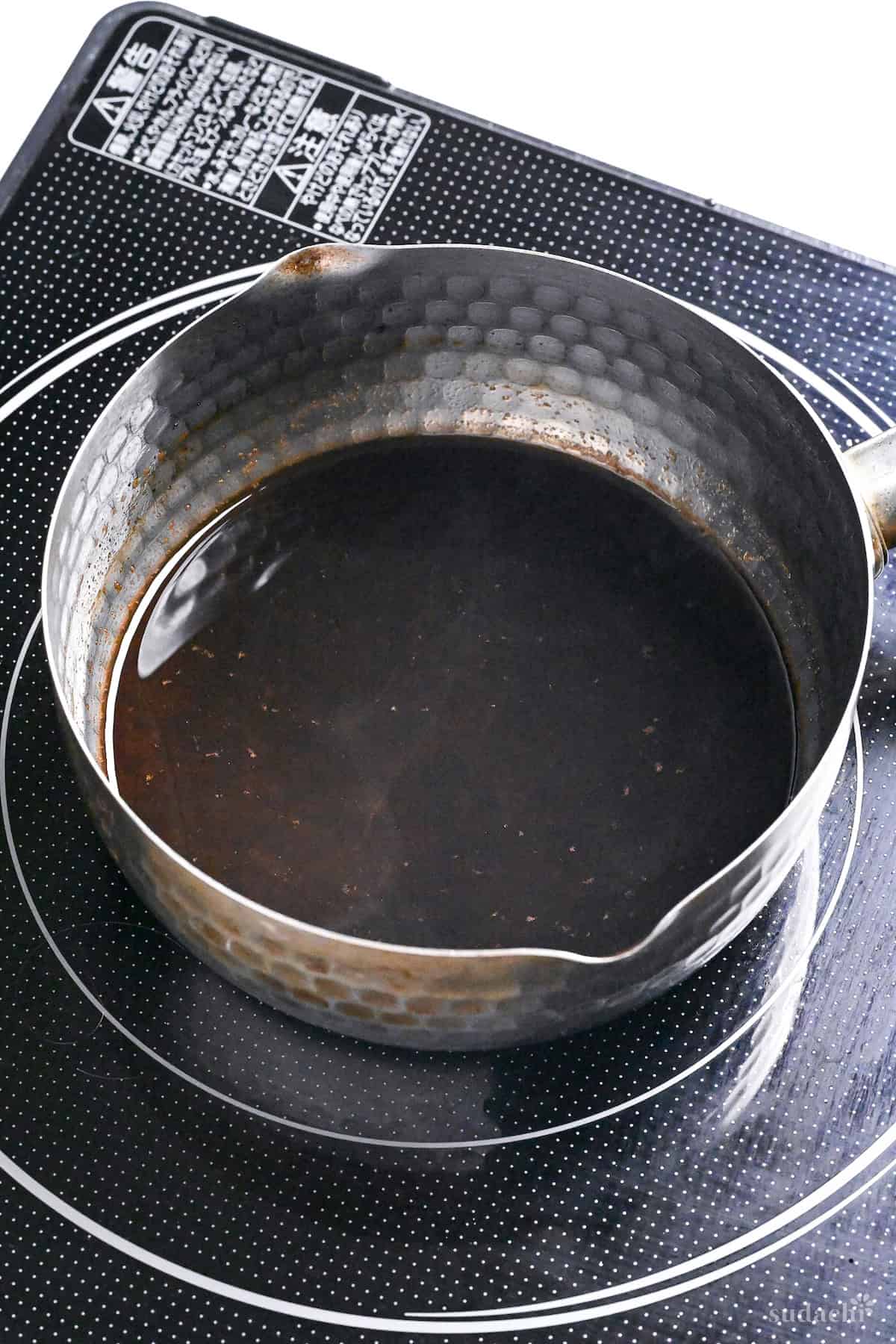
Remove from heat and set aside.
Mix all batter ingredients in a large bowl until well combined. Place breadcrumbs in a separate container.
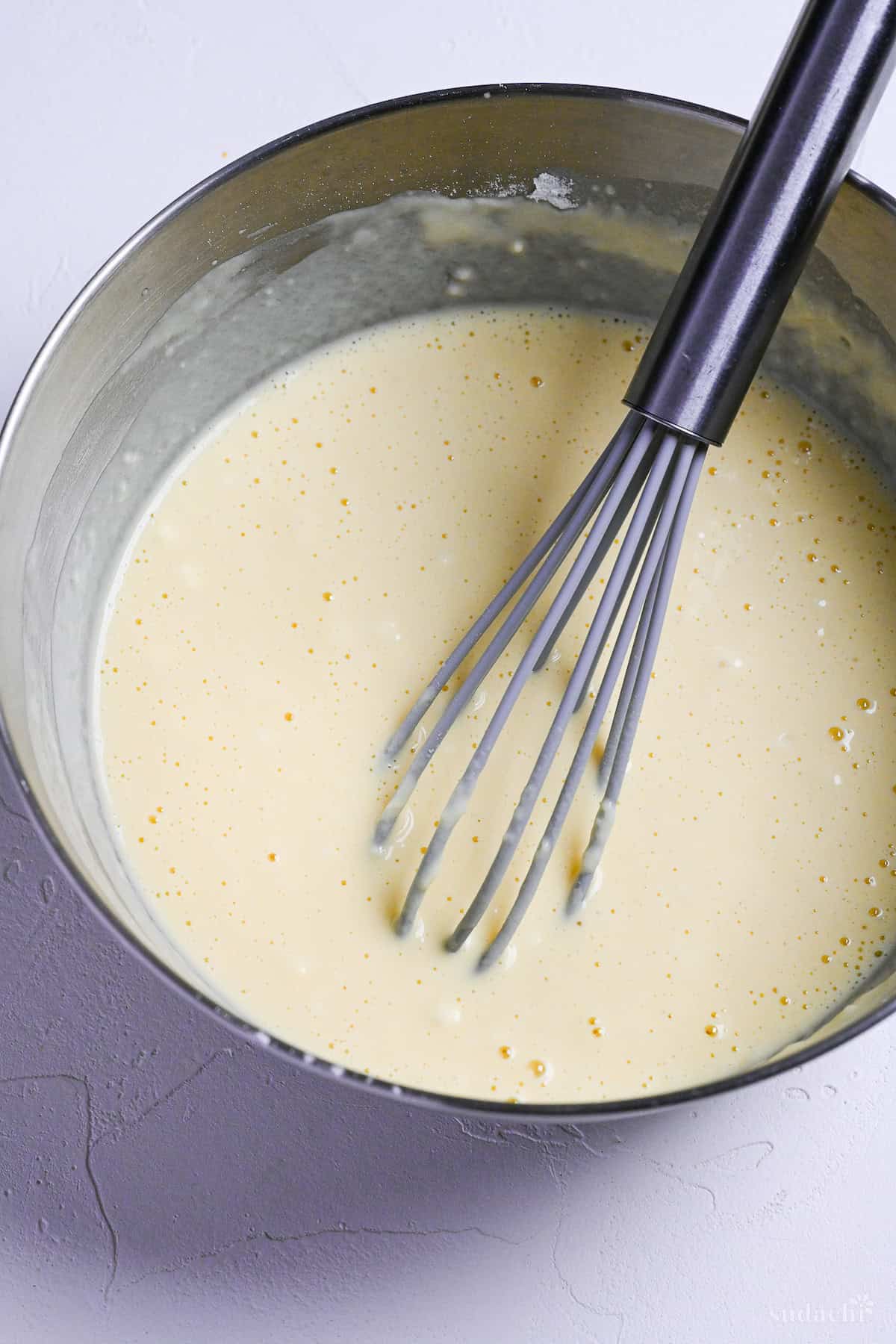
Preheat oil to 170℃ (340°F) in a deep pot or fryer.
Thread one or two bite-sized pieces of each ingredient onto bamboo skewers. Consider the depth of the frying oil when assembling.
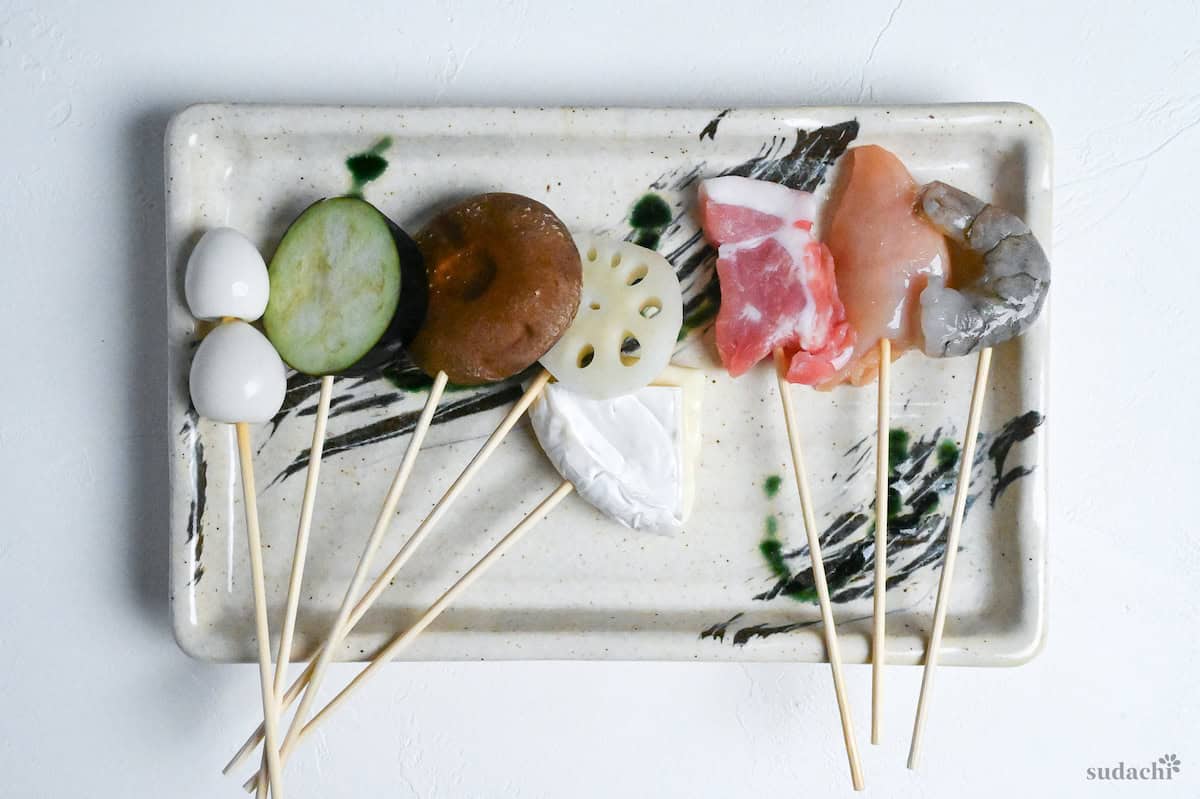
Dip each skewer into the batter.
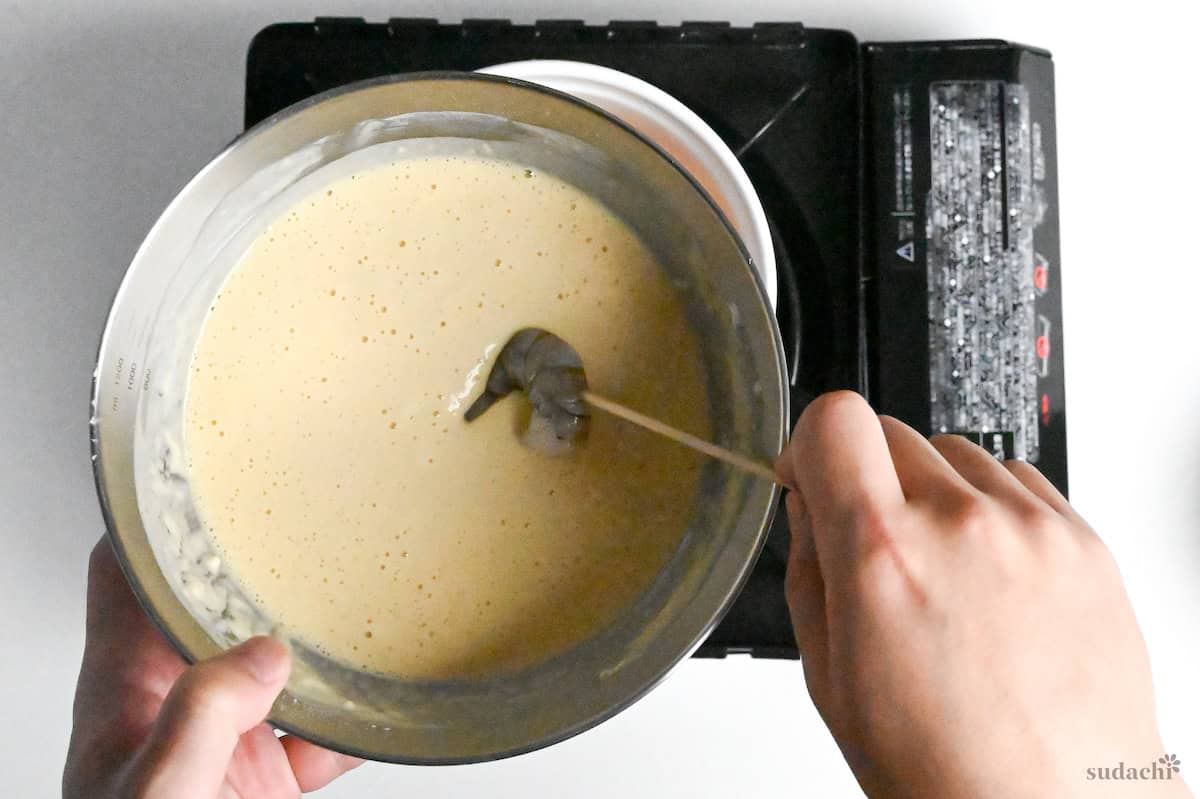
Then roll in breadcrumbs, pressing gently to ensure good adhesion.
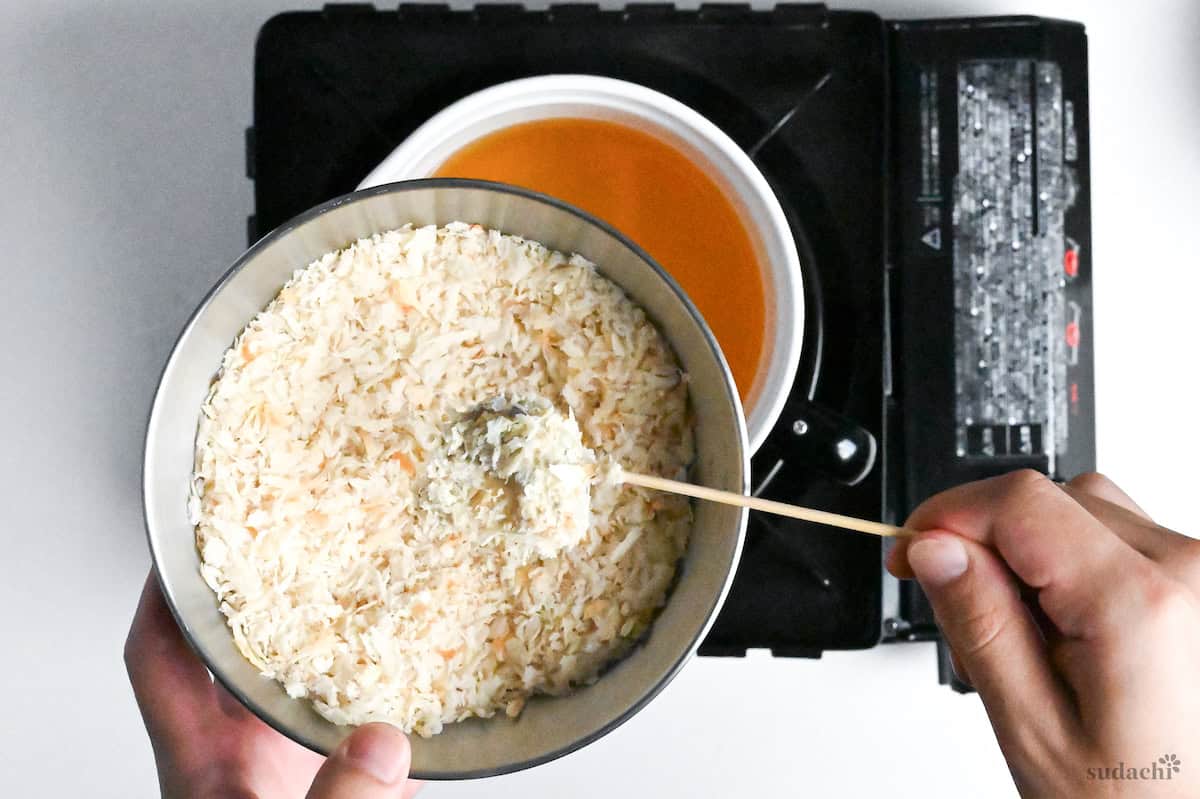
Carefully lower breaded skewers into preheated oil.
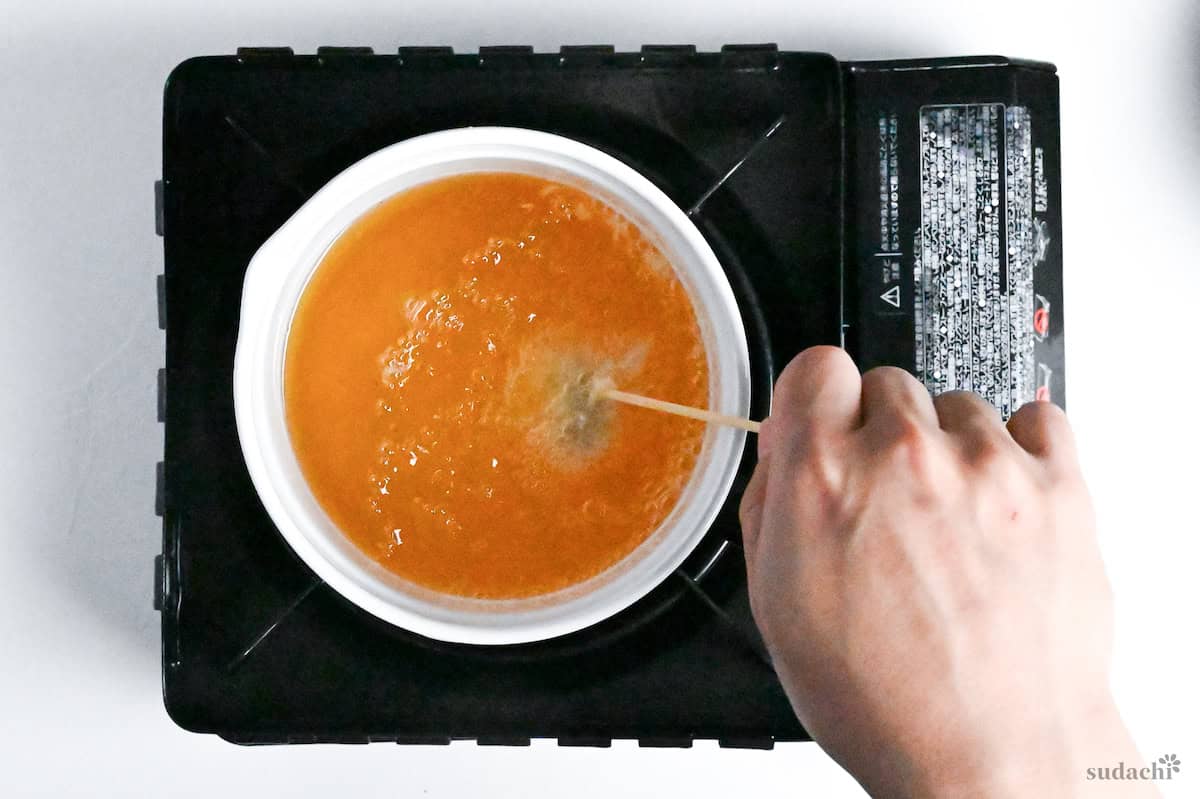
Fry for about 3 minutes, until golden brown and crispy.
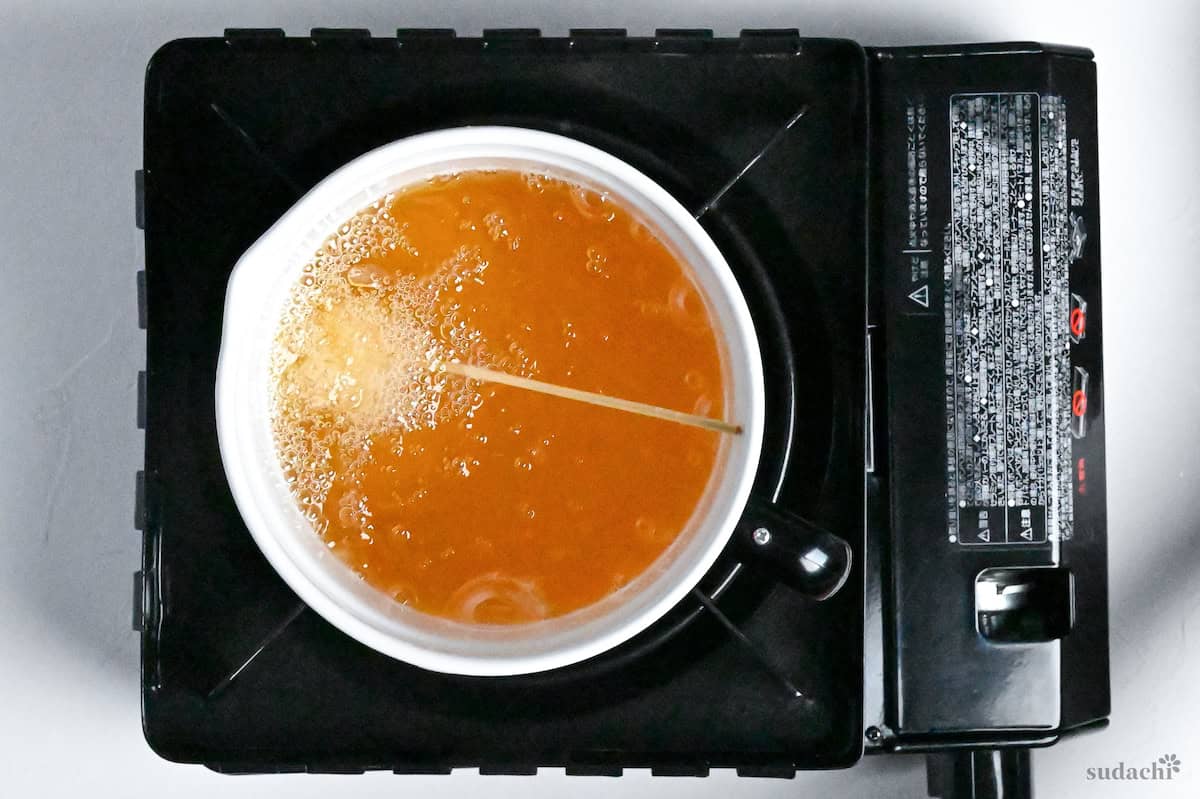
Frying time may vary depending on ingredient size and type.
Remove fried skewers with a slotted spoon or spider skimmer. Place on a wire rack to drain excess oil. Repeat until all skewers are fried.
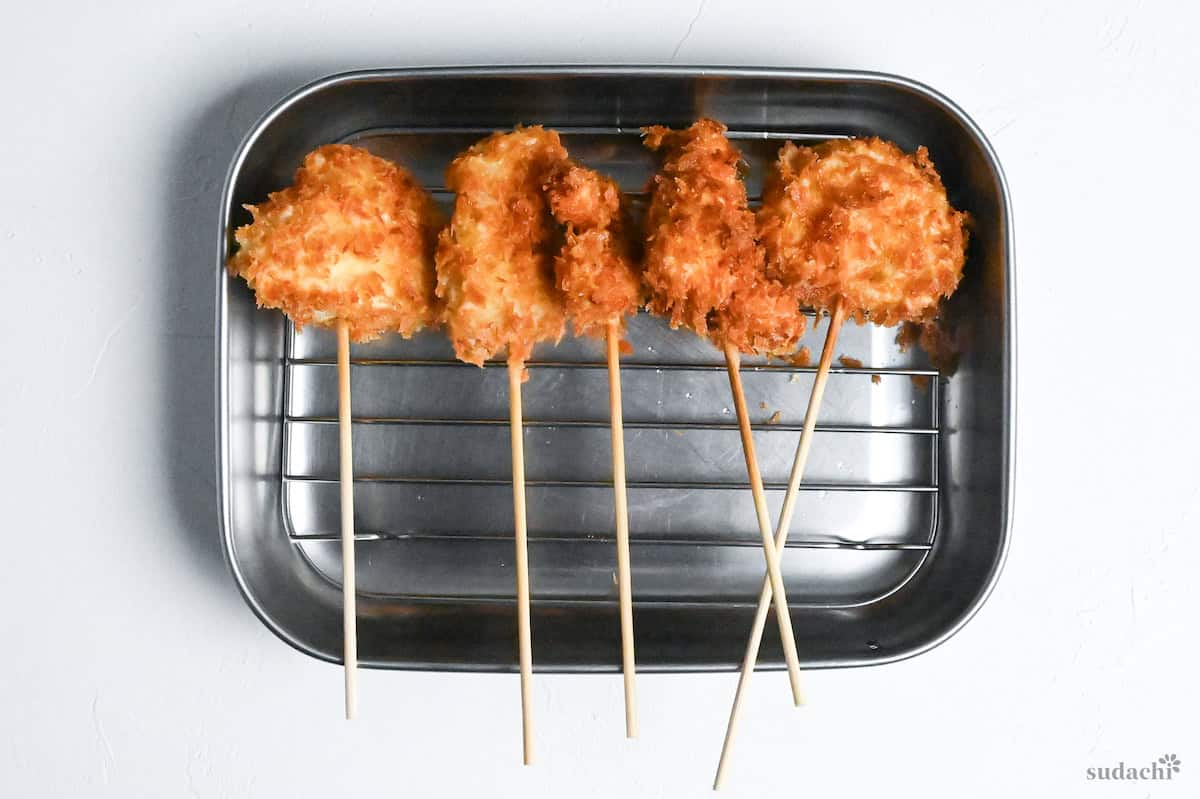
Serve immediately after cooking, or use a tabletop fryer for smaller batches to enjoy while cooking.
Jump to Full Recipe MeasurementsHow to Eat Kushiage: Be Careful in Osaka!
While enjoying Kushiage at home allows for more relaxed dining, eating at a Kushiage restaurant in Osaka comes with a crucial rule that must be followed.
In Osaka Kushiage establishments, the standard practice is to dip your skewer in the provided sauce. However, there’s one golden rule: never dip twice!

At every Kushiage restaurant in Osaka, you’ll find a sauce tray rather than a plate or anything. You’re welcome to dip your Kushiage in this sauce, but be warned – double-dipping is strictly forbidden. Break this rule, and you’ll quickly draw the attention of the restaurant staff. This isn’t a joke – for them, double-dipping is a serious faux pas.

This “no double-dipping” policy was originally put in place for hygiene reasons, as the sauce is shared among diners. What started as a simple etiquette rule has become an unwritten law of Osaka’s Kushiage culture.
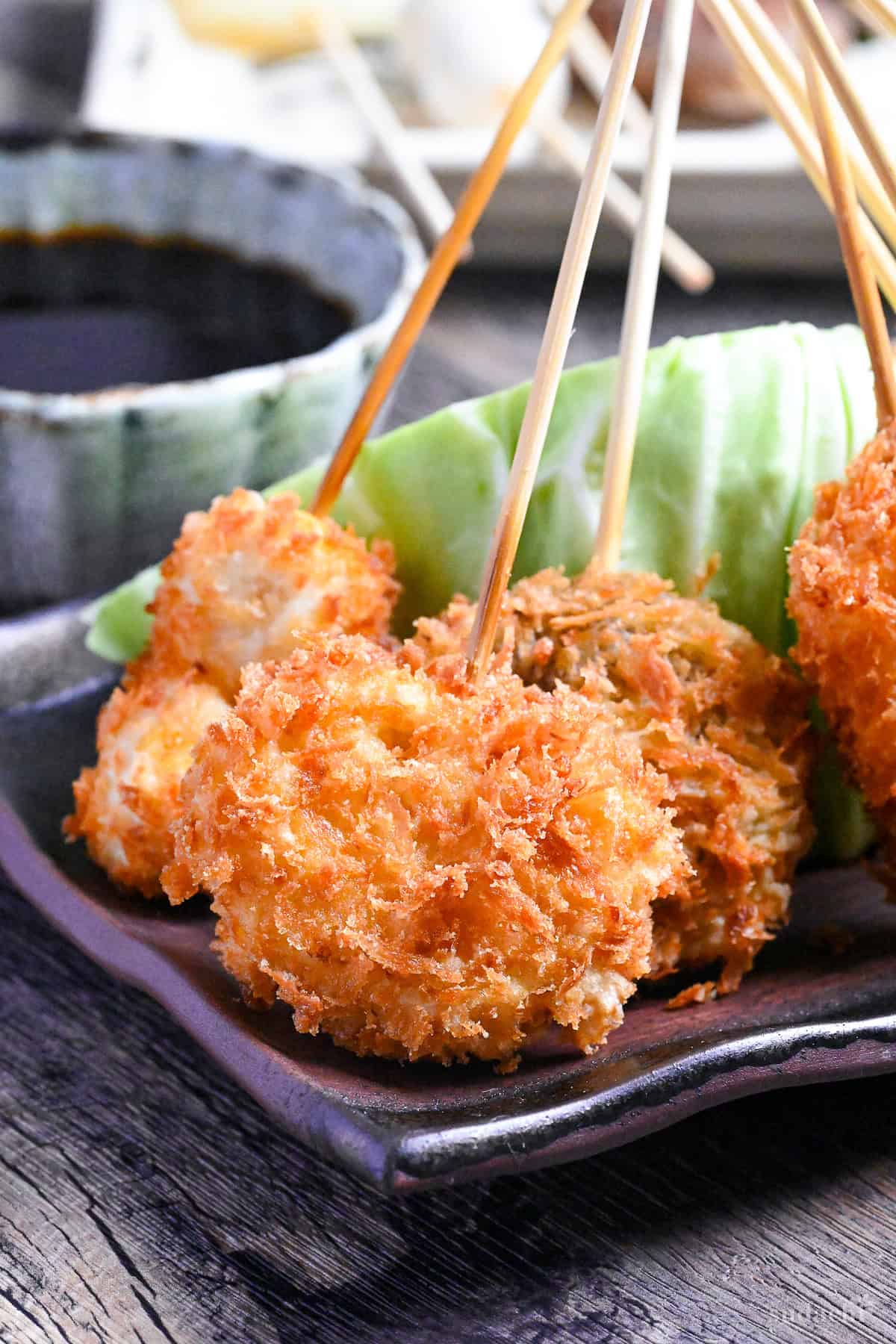
I hope you enjoy this Kushiage recipe! If you try it out, I’d really appreciate it if you could spare a moment to let me know what you thought by giving a review and star rating in the comments below. It’s also helpful to share any adjustments you made to the recipe with our other readers. Thank you!
More Osaka Recipes
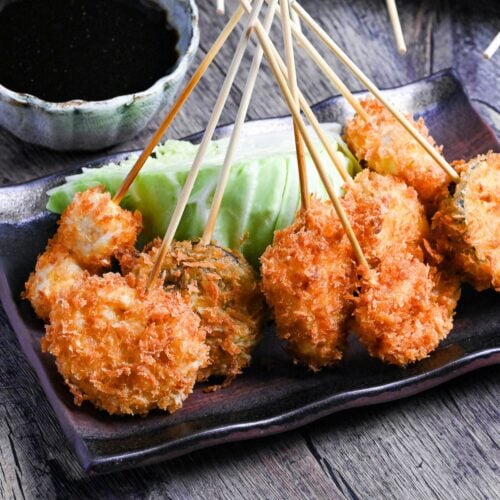
Kushiage (Japanese Deep-Fried Skewers)
Ingredients
Ingredient Suggestions
- 32 bamboo skewers
- 4 slices lotus root (renkon)
- 8 slices eggplant
- 8 quail eggs boiled
- 4 fresh shiitake mushrooms stems removed
- 8 shrimp deveined and deshelled
- 4 pieces Camembert cheese
- 4 pieces pork shoulder
- 4 pieces chicken breast
- cooking oil for deep frying
Batter
- 150 g all-purpose flour or cake flour, plus extra for dusting if necessary
- 250 ml cold water
- 1 egg
- 150 g panko breadcrumbs
Kushiage Sauce
- 80 ml Worcestershire sauce
- 60 ml dashi stock use plant-based for vegetarians and vegans
- 1 tbsp sugar
- 1 tbsp mirin
- 1 tbsp red wine
- 1 tsp tomato ketchup
My recommended brands of ingredients and seasonings can be found in my Japanese pantry guide.
Can’t find certain Japanese ingredients? See my substitution guide here.
Instructions
- Start by cutting and drying all of your ingredients, then thread them onto bamboo skewers. For smaller ingrients like quail eggs or shrimp, you can stack 2-3 on one skewer (however, keep in mind the depth of your cooking oil).

- Take a small saucepan and add 80 ml Worcestershire sauce, 60 ml dashi stock, 1 tbsp sugar, 1 tbsp mirin, 1 tbsp red wine and 1 tsp tomato ketchup. Mix well and boil for 1 minute over a medium heat, then set aside for later.

- Start heating oil for deep frying to 170 °C (338 °F) to 180 °C (356 °F). While you wait, combine 150 g all-purpose flour, 250 ml cold water and 1 egg in a large mixing bowl until smooth. Prepare one more plate with 150 g panko breadcrumbs.

- When your oil is ready, dip the skewered ingredients into the batter one at a time before rolling in the panko breadcrumbs. (Tip: If your ingredients are slippery, it can be worthwhile to coat them in a light dusting of flour before battering.)

- Once fully coated in breadcrumbs, carefully place the skewers into the oil and fry for approximately 3 minutes or until golden. (This time is an estimate and depends on the thickness of your ingredients.)

- Fry in small batches to avoid lowering the oil temperature too much. I recommend frying each ingredient at the same time (e.g. meat together, vegetables together etc.)

- Remove the cooked skewers from the oil and transfer them to a wire rack to drain.

- Serve with your homemade dipping sauce and enjoy!

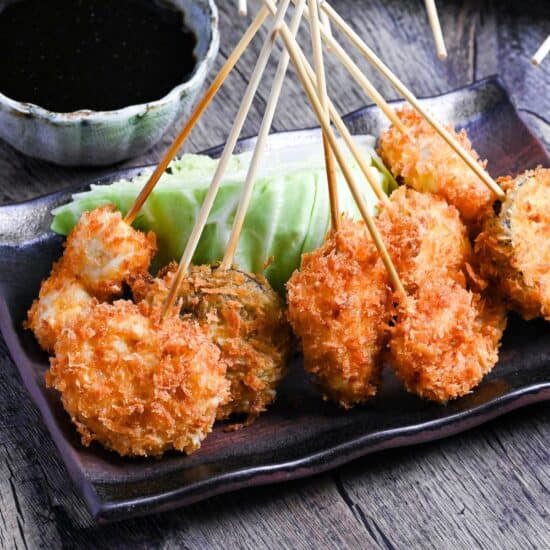




Leave a rating and a comment